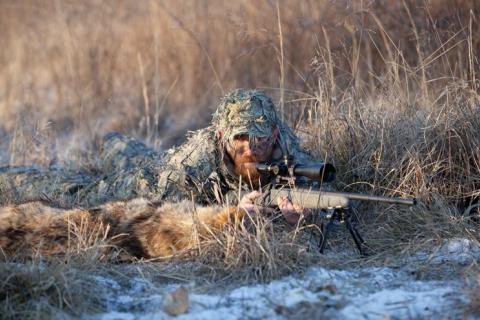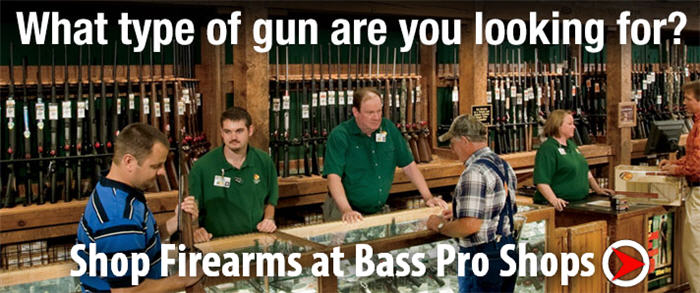
Have you ever been in a situation while predator hunting and you feel as though you do not have the right firearm? Maybe a coyote was too far, maybe the wind was blowing too strong, or maybe a coyote was too close for a high powered rifle. All of these situations are just examples that keep predator hunters asking one of the most debated topics among hunters, which is 'what is the perfect weapon for predator hunting'. Here are three of the most common questions to ask yourself when it comes to choosing the appropriate weapon for your next predator hunt. I'll discuss predator choices, shooting distance and hunting conditions to determine if there really is such a thing as the "perfect" choice of firearm for predator hunting.
![]() Quick link to the Ammo shop at basspro.com
Quick link to the Ammo shop at basspro.com
 What kind of predators will I be hunting?
What kind of predators will I be hunting?
One of the first steps in choosing the right firearm is choosing what caliber you will be shooting. With the multitude of choices for predators, it is best to start with what type of predator you will be hunting. If hunting smaller animals such as a bobcat or fox, you will obviously want a smaller caliber especially if you are hunting for the furs. A smaller bullet will minimize pelt damage. For example, bobcats and fox I would recommend anything from a .17 HMR to a .22 Hornet, .204 Ruger, or possibly even a .223. These smaller types of calibers can still have the knockdown power at a reasonable distance but still minimize pelt damage on a smaller bodied animal. For bigger, thicker skinned predators such as a coyote, you will need more knock down power of a bigger caliber such as .223, .22-250, .243 Win, .25-06 Rem, and a 6.5 Creedmoor. The heavy calibers will give you the assurance of having a quick humane harvest depending on your caliber of choice up to several hundred yards.
Click here for larger+ view of ammo chart above
![]() Tip: Scout your area before hunting so that know what types of predators you have. If hunting an area that has bobcats and coyotes, choose a caliber that will work effectively on both. If your area is mainly coyotes, then choose a heavier caliber designed more for them.
Tip: Scout your area before hunting so that know what types of predators you have. If hunting an area that has bobcats and coyotes, choose a caliber that will work effectively on both. If your area is mainly coyotes, then choose a heavier caliber designed more for them.
![]() Tip: Another option for fur harvesters is to carry a shotgun alongside your rifle. Anything within 50 yards can be shot with a shotgun and eliminate damage to the fur.
Tip: Another option for fur harvesters is to carry a shotgun alongside your rifle. Anything within 50 yards can be shot with a shotgun and eliminate damage to the fur.
![]() Tip: Read, Unerstanding "ammo speak" when selecting the proper rifle cartridge or caliber for hunting.
Tip: Read, Unerstanding "ammo speak" when selecting the proper rifle cartridge or caliber for hunting.
 |
| Hornady Ammunition, Accurate, Deadly, Dependable |
At what distance will you be shooting?
Where I am hunting always determines what caliber I will be using, being from the midwest, I often hunt cattle farms. Before the hunt I ask myself, will I be hunting open pastures or will I be hunting in the woods. Then I consider what my closest and longest shot could be. If I only have a 200 yard or closer shot I will take a .243 or a .22-250. If I am hunting out West where I know I will have a 300 to 500 yard shot, I will then choose a caliber that will reach out longer. In this situation I usually carry my Kimber Montana 6.5 Creedmoor, with it I can shoot a coyote at 400 plus yards and still have a high velocity to make a clean harvest. No matter what firearm I am carrying the first thing I do when I sit down is range multiple objects with a rangefinder. This helps me determine where I need to aim to make the best shot at every possible place that a predator could approach. Think of yourself as a skilled carpenter, you always want to take the right tool for the job. The same goes with a firearm, take the one that will do the job.
![]() Tip: Shoot your firearm at multiple distances. Start off at 100 yards, then move to 200, 300, 400, and 500. Know exactly how much you have to adjust your aiming point in your scope at every distance marker, that way once you get to the field and use your rangefinder, you will know what you have to do to be able to hit your target.
Tip: Shoot your firearm at multiple distances. Start off at 100 yards, then move to 200, 300, 400, and 500. Know exactly how much you have to adjust your aiming point in your scope at every distance marker, that way once you get to the field and use your rangefinder, you will know what you have to do to be able to hit your target.
Ballistic Charts (PDF) by Hornady
For more information, view our H.I.T.S. Calculator to help you choose the most effective cartridge/bullet combination for any hunting situation.
What kind of conditions will you be hunting?
Now that you know how far you will be shooting, your next question should be what the weather conditions will be like where you are hunting, I am mainly talking about wind conditions. Most of your long distance competition shooters will tell you that wind can make a big difference on the trajectory of your bullet path. In states such as Kansas and Oklahoma, the wind blows strong everyday. As hunters we have to learn to adjust to the strong wind, that means adjusting our shooting skills as well, and that begins with what caliber of firearm you are using. I like using a 6.5 Creedmoor in windy conditions, especially on long distance shots. A 6.5mm bullet such as Hornady Match 120 gr AMax has the ability to cut through the wind and still has a high fps when it gets out to 400 to 500 yards. However, that doesn't mean that other calibers will not work in windy conditions, a .22-250, .25-06, and .243 work well also. Like I said before, it all comes down to getting out on the range and shooting to know exactly what your gun and ammo selection will do in every situation.
![]() Tip: Head to the gun range with a notebook, go in different weather conditions, shoot at multiple distances, then make notes of how your ammo selection performs. This will help you be prepared no matter what mother nature throws at you.
Tip: Head to the gun range with a notebook, go in different weather conditions, shoot at multiple distances, then make notes of how your ammo selection performs. This will help you be prepared no matter what mother nature throws at you.
Final Verdict, Is There a Perfect Predator Rifle?
As you have read, to be a consistent successful shooter it takes time and doing your homework. To answer the question 'is there a "perfect" predator firearm?', I think that all depends on how well prepared you are. If you take the time to know exactly how your equipment performs, that will determine how "perfect" it is. Also, remember there is a difference in being a competition shooter compared to being a predator hunter. If you are harvesting coyotes on a consistent basis then you have done your job as a hunter and you have found YOUR perfect predator gun.
- 19454 views


